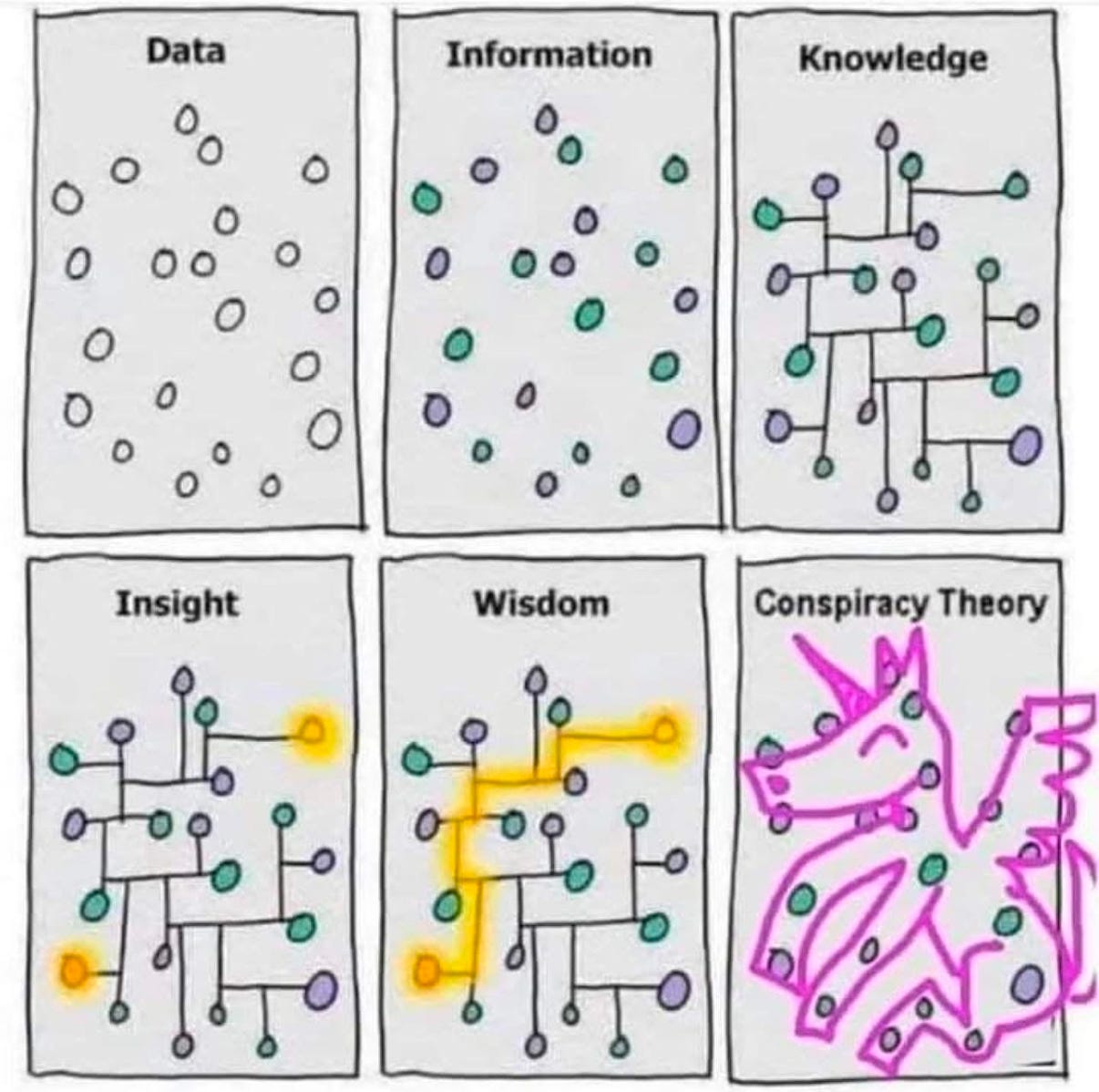Sometimes ..
... You Just Need To Connect The Dots
Then again - the ‘conclusions’ aren’t always a lock.
So, let’s explore together. Here’s what the past 24 hours have thrown my way…
I was introduced to a team deeply immersed in AI. I won’t go into their work here, but one line stuck with me: “I just can’t help connecting the dots - it’s what I do.” A ‘brother from another mother’. And - as it turns out - a lot of those dots tie back to one thing: process. More on that in a moment.
Then I …
stumbled on this article - Meet Your AI Co-Workers: How OpenAI and Anthropic Are Rewriting Work.
listened to this podcast … 🎙️China Is Run by Engineers. America Is Run by Lawyers from Stephen Dubner and Freakonomics. It’s a great show - but it was what his guest (Dan Wang) said towards the end. If you don’t have time to listen to the whole thing - fast forward to minute 47 or so - and learn about ‘process knowledge’. It certainly caught my attention.
And then there was a radio interview with Craig Steel from Vantaset (🎙️Listen), which quickly made waves in the New Zealand media. Prefer print? You’ll find it here.
“When AI is implemented simply to reduce workforce size or centralise control, it can backfire, weakening morale, diminishing trust and stalling innovation.”

All of this lands against a backdrop of Structured Thought I’ve been developing - specifically the shift from Producer Efficient Supply Chains to Customer Effective Demand Networks. The question is: where do you begin, and what do you focus on first? Because, despite what the movie might suggest…
AI will not be ‘everything, everywhere all at once’ - even though it might feel that way. It starts, and is in fact already starting, with the low-hanging fruit.
Take my brief stint as a Chartered Accountant trainee. As one of the ‘grunts’ in an auditing firm, my job was often to wade through piles of dog-eared flowcharts and confirm that the processes recorded on paper matched reality. My role was to flag the ‘deltas’ - the gaps. Many before me had done the same, leaving a trail of annotations so dense it was almost impossible to tell what the actual process was. At least, not for a first-year ACA student.
Years later, I landed at Vitria - competing with Tibco, SeeBeyond, and others in the crowded world of middleware. It was another chapter in the long tradition of process mapping. And the fight still goes on. Real AI - not today’s LLM craze - has been doing this work for decades: routing logistics, planning manufacturing capacity, detecting financial fraud, predicting equipment failures in aviation and utilities. Long before ChatGPT made AI a household word, these systems were already solving large, messy, real-world problems at scale. I’ve always thought of this work as ‘gap mapping.’ It was low-hanging fruit then, and it remains so today. But there’s still a long way to go.
… and that’s just one field we’ve been tinkering with for decades - never short of tech firms offering fixes. Now AI is cracking open fresh possibilities, with a new crop of startups racing in with their own AI-powered solutions. In ‘process mapping’.
The conclusion? AI is simply the next chapter in a long book we’ve been writing on process. The shift from Producer Efficient Supply Chains to Customer Effective Demand Networks isn’t about replacing people with machines - it’s about re-centering process around outcomes that matter. Middleware once helped us connect systems; AI now helps us connect intent, demand, and execution at a scale we haven’t ever been able to get close to. The real opportunity lies not in making processes faster, but in making them smarter, fairer, and more human.
If you want to talk more - I certainly do.
Let's set up some time to explore how Structured Thought can be used to help your business transition into the ‘Age of Experience’.





Improve the human to human to AI interactions to Make Meaningful Work what Jo Wong calls "Moments that Matter" See - https://www.amazon.com/dp/173792823X